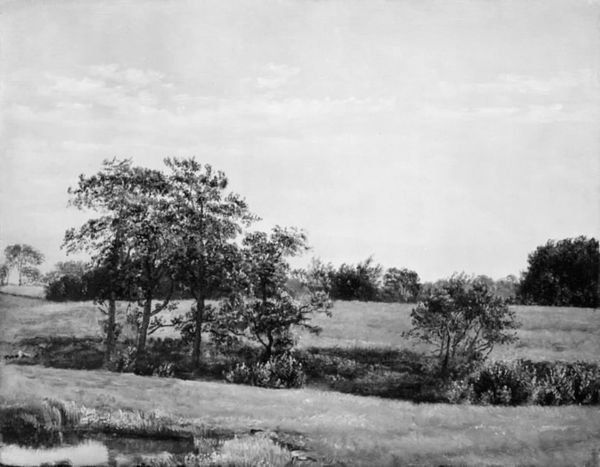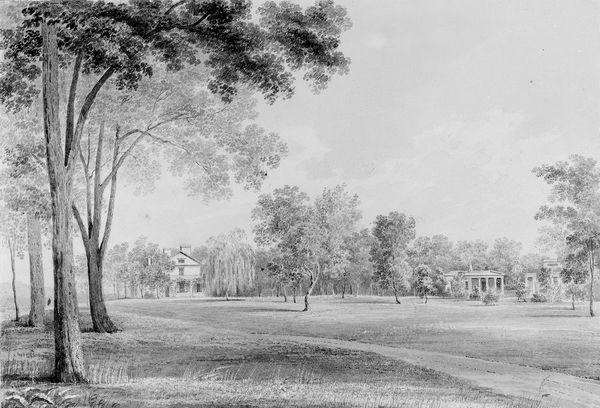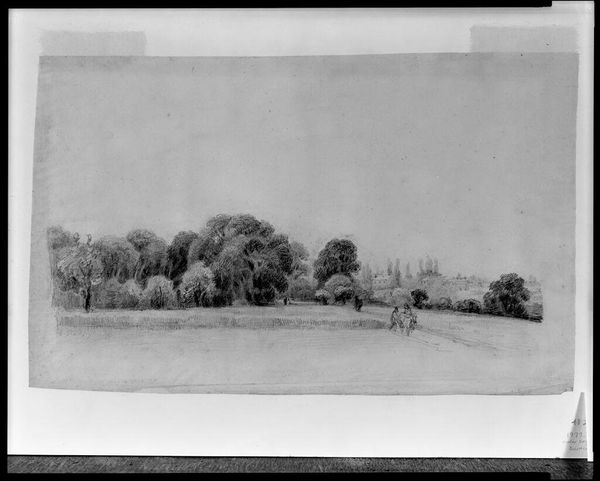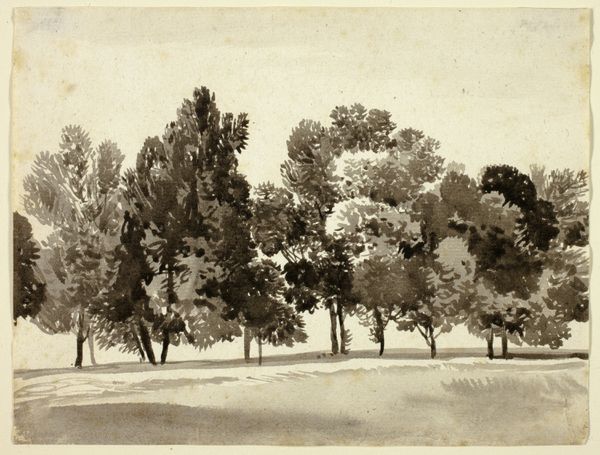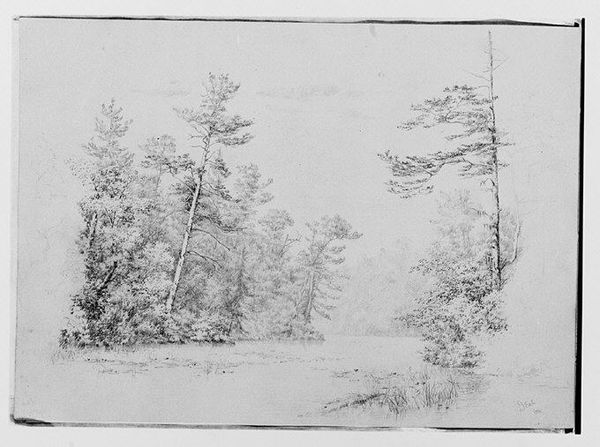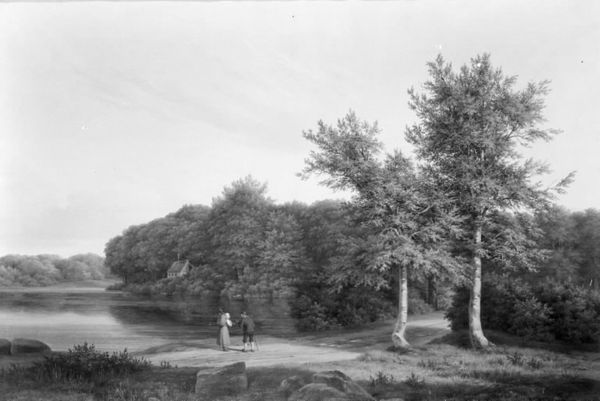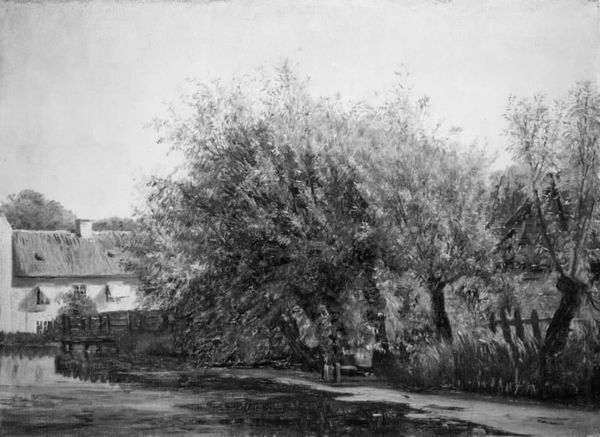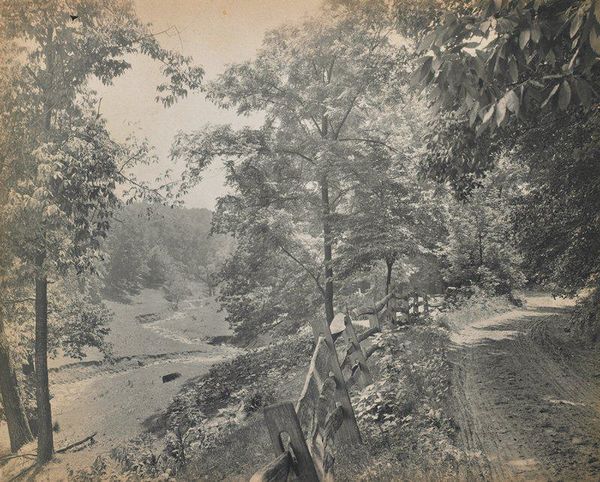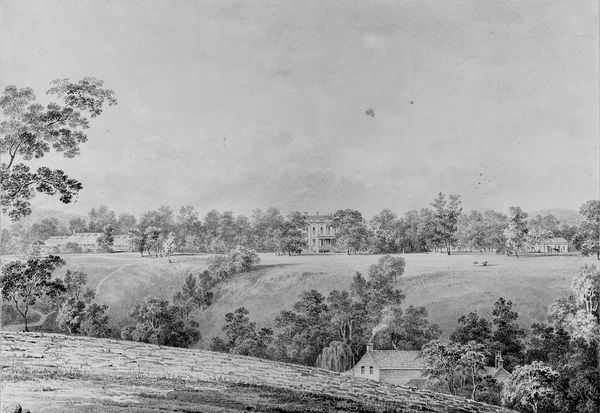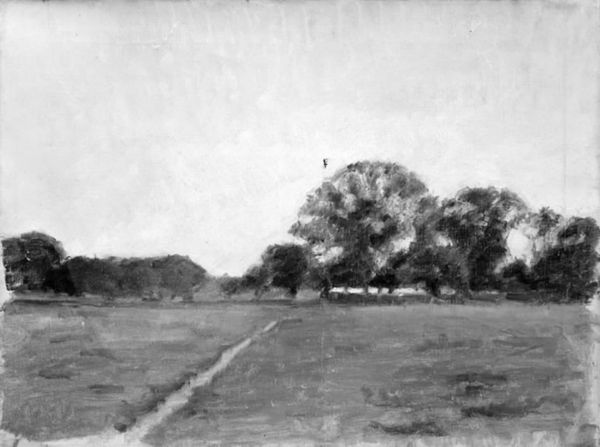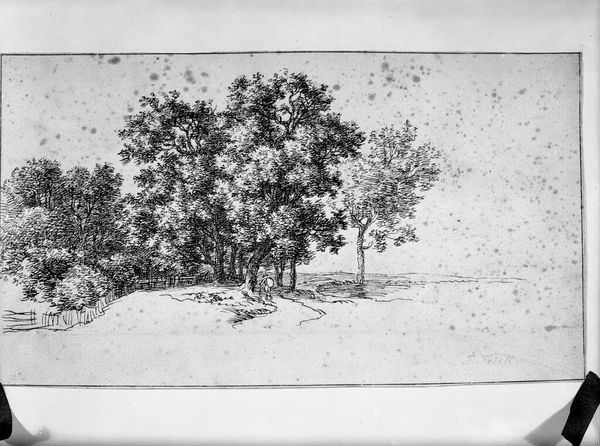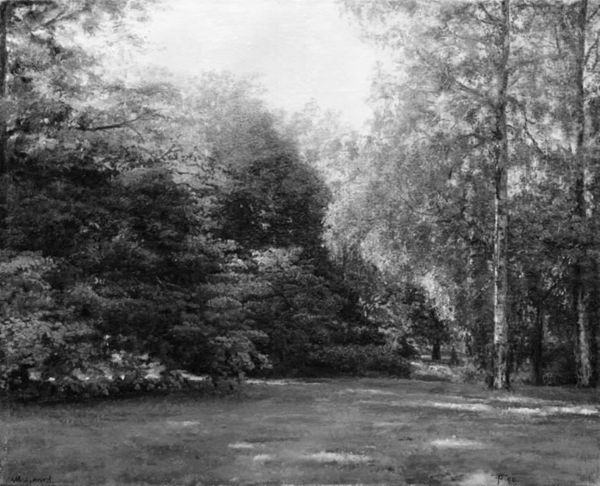
View of David Hosack Estate, Hyde Park, New York, with a Sundial (from Hosack Album) 1829 - 1832
0:00
0:00
drawing, pencil
#
tree
#
drawing
#
countryside
#
landscape
#
nature
#
outdoor scenery
#
romanticism
#
pencil
#
monochrome
#
monochrome
Dimensions: 3 x 3 9/16 in. (7.6 x 9 cm)
Copyright: Public Domain
Curator: This monochrome pencil drawing, dating from around 1829 to 1832, captures David Hosack's estate, Hyde Park, New York, including a sundial. It's part of the Hosack Album and now resides here at the Met. Editor: It's strangely calming. Despite the lack of color, there’s a lot of texture. You can almost feel the breeze through the trees. What I do find a bit intriguing is this almost staged quality in its construction and monochromatic values. Curator: Absolutely. The choice of pencil as a medium highlights the relationship between artistic skill and available resources in creating and circulating landscapes. It suggests a direct, almost documentary approach, but also required considerable artisanal training to create. Editor: I agree. There’s something powerful about the image of the sundial – this stark memento mori positioned prominently. It speaks to mortality and our futile attempts to measure time, placed here with these youthful, vital trees as if they're in some kind of visual debate. It almost acts as an ancient Greek symbol that offers commentary on our brief but lively tenure. Curator: And how that contrasts with the cultivated nature around it! Think about the labor that went into designing and maintaining an estate like Hyde Park in the early 19th century. It speaks to a society where land ownership and its visible modification were central to status and wealth. Every blade of grass might as well carry economic value and even more social standing, from production to property value. Editor: Definitely. And the estate as a concept – a designed space echoing power. It almost resembles a miniature Eden but touched with somber realization, underlined again and again by that sundial as a foreboding landmark, ever-present in that staged idyllic garden. Curator: So, what are we left with when we analyze the materials and how they shape both the aesthetic and the social statement? Editor: A fragile but vivid glimpse into an age, using both raw material, land, and a philosophical compass to show the delicate interplay between the desire for immortality and its inescapable impossibility. We are able to consider how these images and places continue to be invested in power even today.
Comments
No comments
Be the first to comment and join the conversation on the ultimate creative platform.

